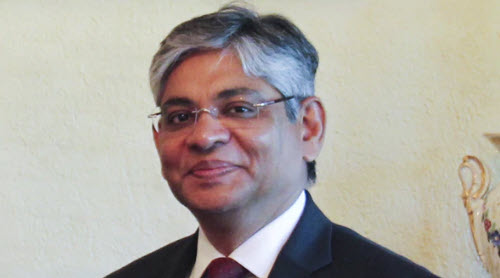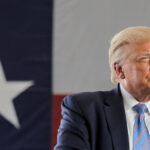Arun K Singh, who was head of the Iran desk in the Indian foreign ministry as well as an ambassador to Israel, also said the 2015 Iran nuclear deal was as good as dead

NEW DELHI : There may have have been a de-escalation in the confrontation between the US and Iran for the time being, but tensions will continue to simmer, thanks to maneuvering, and proxy or cyber attacks by US and Iran against each other, says Arun K Singh, former Indian ambassador to the US.
Singh, who was head of the Iran desk in the Indian foreign ministry as well as an ambassador to Israel, also said the 2015 Iran nuclear deal was as good as dead, with fresh talks required to resurrect it. Though India has been careful not to side with Iran or the US, its deep interlinkages with the US economy and financial systems compel India to circumscribe its ties with Iran.
Edited excerpts:
1) Is the present confrontation over, you think, or is there potential for a new flare up any time soon?
Both Iran and US have signaled that they want to walk back from the current escalatory phase. After the US drone strike that killed the Iranian evolutionary Guards’ Al- Quds force leader Qasem Suleimani, US President (Donald) Trump and Secretary of State (Mike) Pompeo had spoken of de-escalation. Iranian leaders first spoke of a proportionate response, and then of de-escalation after their missile strikes. The Iranian response was carefully calibrated. It showed technological capability, precision, took place within Iraq where the US attack had been, and was directly attributable to Iran. US was able to claim that it suffered no casualties, and thus could avoid a response. Reports also suggest that the Iranians had informed Iraq’s Prime Minister in advance, signaling a sensitivity to Iraqi sovereignty, and differentiating itself from US which had not given Iraqis advance notice. There is some speculation that the Iraqis had forewarned the US of the impending attack, and that US intelligence had also picked up signs of preparation of such an attack. However, this does not mean that tension, maneuvering, and proxy or cyber attacks by US and Iran against each other’s interests have come to an end. US continues with its stringent economic sanctions depriving Iran of billions of dollars of oil and other revenue, designating as terrorists many of its leaders and government entities, and the two countries have adversarial interests in Iraq, Syria, Afghanistan and Israel- Palestine.
2) What do you see as the future for the West Asia region? Iran seems pretty clear that they want the US forces out of the region and the US seems keen on a withdrawal. President Trump mentioned an increased role for NATO there. How do you that playing out?
When US troops had initially moved into Afghanistan in 2001, after 9/11, Iran had seen some advantage to itself from the Taliban being driven out of power, and had not been hostile to the arrival of US forces. However, their attitude changed when US President George Bush, in his State of Union address in 2002, described Iran as one of the “Axis of Evil” along with Iraq and North Korea. Similarly, Iran gained from US displacing Saddam Hussain in Iraq in 2003 and paving the way for majority Shia dominance in that country. Both competed, in adversarial manner, for influence over the post Saddam political and security structures. They had convergence of interest in the fight against ISIS, but are arraigned on opposite sides in Syria. Given US economic and other pressure, Iran would clearly see a threat from a dominating US physical presence in its neighborhood. Trump had also waged his 2016 Presidential campaign on ending US involvement in “endless wars”, and would ideally like to showcase US draw down as the 2020 campaign picks up. But he cannot be seen to have retreated out of weakness. Drawdown in Afghanistan has stalled, as have negotiations with the Taliban. If NATO steps up involvement and number of troops in Iraq, it would provide Trump the fig leaf to reduce number of US troops. However, NATO was conceived largely for European operations, against the Soviet and later the Russian challenge. It did not perform well in its first “out of area operations”, in Afghanistan, and essentially remained dependent on US strategy, infrastructure and was confined to supporting roles such as in training and advising Afghan forces. Also, there is political opposition in the European NATO members to involvement outside Europe, although they may want to avoid giving Trump another reason for criticizing NATO as ineffective or wasteful, or NATO not doing enough and leaving the heavy lifting all to the US.
[contextly_sidebar id=”mv0kkffnHXBvoTiJCxiTnc5zLuKMyINb”]
3) Do you think the US presidential elections will make any difference? Most of the candidates – Republican or Democrat-don’t seem to give West Asia/Middle East much of attention (except after the Soleimani assassination).
The outcome of the 2020 US Presidential election may not make too much of a difference, although a different administration always has space for fresh diplomatic approach, including one to differentiate itself from its predecessor. Many of Trump’s policies, including on Iran and North Korea, have been driven by the impulse to show that he is different from Obama. At the same time, both Democrats and Republicans now want to reduce US troop presence in active war theaters, having seen the limits to their impact, or failures in Afghanistan and Iraq, and with the large number of casualties with family and societal impact within US. Political leaders in US will remain sensitive to West Asia, because of oil (despite US itself becoming surplus), Israel, and potential criticism for having surrendered US interest to rivals. US presence will continue in Bahrain, Qatar and elsewhere in Gulf. In fact, US has increased the numbers there recently. The question is US presence in active war theatre and active participation in conflict. There is political pressure in the US domestically to draw down on that.
4) What is the future of the 2015 Iran nuclear deal? Can it be resurrected given that the Europeans were kept out of the loop on the Soleimani targeting?
For now, the JCPOA (Joint Comprehensive Plan of Action or 2015 deal) is effectively dead. Iran has not received the sanctions relief it had been promised, in fact Trump has ratcheted up sanctions. The Europeans have not been able to create any effective mechanism to bypass the US sanctions and continue trade with Iran, which has now been step by step crossing the JCPOA limitations, even while allowing for continued IAEA monitoring. It cannot be ruled out, however, that a Democratic President may be willing to revive JCPOA, to reinforce the Obama legacy and show up Trump’s as a failure, but will have to deal with Iranian skepticism and European need for reassurance about enduring nature of the revived effort. Even then, fresh negotiations may be necessary to get an Iranian buy in, and some satisfaction to US negotiators and political leaders on Iran’s other capabilities and neighborhood strategies.
5) What is the impact of the current tensions on India-Iran relations?
India’s External Affairs Minister recently visited Tehran, following the 2+2 dialogue with US in mid-December. After the recent escalation, he also spoke to his US and Iranian counterparts, articulating Indian interest in de-escalation. India has not aligned itself with either US or Iran. However, with its deep interlinkage with US economy, it has had no option but to observe US sanctions, as have most countries globally. As a result, the economic relationship with Iran has suffered, oil imports have been reduced to zero, and development of Chabahar port has slowed, despite US waiver, because shipping and other companies do not want to face the potential risk of US sanctions. The constraints that India has been facing will continue unless US policy on Iran changes.
6) The current tensions seem to have brought into focus India’s vulnerabilities vis-a-vis energy, trade, investments and diaspora but most of all, its energy dependence. There has long been talk of diversifying energy sources but even today key suppliers are predominantly Gulf countries. What can India do to reduce its energy dependence on the region?
India has been working assiduously to strengthen links with other major countries and suppliers in the Gulf, particularly Saudi Arabia and UAE. Both are looking at large investments here in the petrochemical sector, and in the strategic reserve. At the same time, India has, for some time now, been taking steps to reduce its energy dependence on the Gulf. Presently, around 80% of India’s energy requirement is imported, and 50% of that from the Gulf countries. India has invested in energy resources in Russia (in Sakhalin), in Mozambique, and has started importing also from the US (so far to the tune of $8 billion). Emphasis on renewal energy and nuclear, is another part of this effort. But dependence on the Gulf region will continue for a while. Relations with countries in the region are also important for employment and remittances.
[contextly_sidebar id=”icrjrGTTWARnI4NqzeD9j7OvexlBLmcN”]







